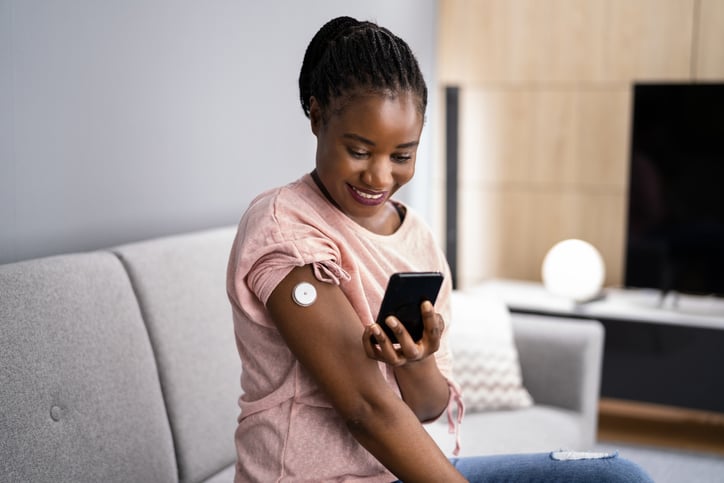Continuous glucose monitoring (CGM) is a way to continuously track your blood sugar. It checks the blood sugar level in the fluid between your body cells. It’s done using a disposable device that your doctor can prescribe for you to pick up at your pharmacy.
To use a CGM, you place a tiny sensor under your skin, usually on the back of your upper arm or the side of your belly. The sensor is connected to a small adhesive pad you stick to your skin. A transmitter in the pad collects the data from the sensor and sends it wirelessly to a monitor, or even your cell phone, every few minutes, day and night. You replace the device every 10 to 14 days.
“CGM does not completely replace the need to do finger sticks and use your standard blood sugar monitor,” said Dr. Lisa McAdams, senior medical director at Zing Health. “But with CGM, you won’t need to do the finger sticks as often.”
Why Might I Need CGM?
CGM is a good choice for anyone with diabetes who is having a hard time getting their blood sugars and A1C level under control. It’s also helpful for people who may not have or recognize symptoms of low blood sugar.
The data from your CGM can help you spot patterns in your blood sugar readings so you can adjust how you manage your diabetes. For example, you may notice that your blood sugar is lower at certain times of the day, after certain activities, or after eating certain foods. It can also help you know if your blood sugar is on the rise or dropping. You can set and adjust alarms to alert you when your blood sugar gets too high or too low.
“This can help you balance food, activity, and insulin, and make better decisions about what to eat and how much activity you need,” said Dr. McAdams. “You’ll have better control over your diabetes.”
If you have a caregiver who helps you to manage your diabetes, blood sugar readings and alerts can be sent directly to their phone so they can help. Reports from a CGM can also help your doctor to adjust your medicines.
Are There Drawbacks to CGM?
Learning to use all the features of your CGM device may require help from your doctor, diabetes educator, or other healthcare provider. The various models of CGM machines can be quite different from each other. Be sure the training you get is specific to your CGM machine.
Some people may not like to wear a device day and night. However, with advances in technology, devices are getting smaller and smaller and easier to use. Some people may react to the adhesive used to hold the device on the skin.
You may be asked to remove the sensor before getting any imaging tests such as X-rays or MRIs. If you need to remove the sensor, bring a new one with you to your appointment. If possible, try to schedule your appointment when it's time to replace your sensor.
Where Can I Learn More About CGM?
“There’s a lot of health information on the internet, and not all of it is accurate,” said Dr. McAdams. “We’ve pulled together a list of high-quality resources for our members who want to learn more. Just click on each item to be taken to the resources.”
Association of Diabetes Care & Education Specialists
Y0149_B_011152021_C




